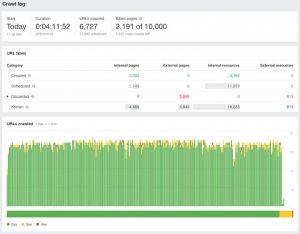The modern world has gone through varying degrees of disruptions, however, none can be compared to what we have seen with the COVID-19 pandemic. To say that the global supply chain was heavily impacted by COVID-19 is just stating the obvious.
Your business, as well as those of others, may have experienced any of the normal smaller, everyday disruptions of machines going down, unexpected orders, suppliers missing, or shorting shipments, which are random problems businesses have to deal with every day, every week, every month. There are also some other disruptions that can be placed in the medium category due to their impacts on the supply chain such as the tariff and trade battle between the U.S. and China.
You may be tempted to assume that the trade war between the two countries has little or nothing to do with the global supply chain but, the fact remains that international e-commerce is vulnerable to a tit-for-tat trade war involving retaliatory protectionist policies and the need to understand the net impact against margins and consider options.
There are also a handful of disruptions we can categorize as heavy since they have had strategic and global impacts such as the 1979 Energy Crisis, the 9/11 terrorist attacks, and the state of the supply chain due to the COVID-19 pandemic. These “heavy” disruptions have clearly shown that world economies are highly dependent upon their global supply chains, as companies around the world had to shut down production having run out of parts that are sourced from China.
Fallouts from COVID-19 have put a huge spotlight on the precariousness in the global supply chain, the reality has dawned on us that we are highly interdependent. It’s, therefore, of utmost importance that you should understand how to be resilient, handle risk, and react to sudden and drastic fluctuations in your global supply chain strategies.
This is what the new normal holds in stock for you and you must be prepared for the volatility that is sure to surface in the nearest future.
What your brand should do about the disruption in the global supply chain
Transiting into the new normal or the “next normal” as some analysts have decided to label it borders on preparing for, responding, reacting, and navigating the following three turbulence in the supply chain.
- Conspicuous product sales inconstancy
The period of unprecedented upheavals you are going through in the demand for your products and the channels through which they’re sold is based on the disruptions in the global supply chain. As a result of the lockdowns that took the world in a wave all in an effort to stem the raging pandemic, people stopped leaving their houses for non-essential items, the dependence on fast and secure delivery straight to their door grew exceedingly.
Before the pandemic, home delivery was a way of marketing but it was not the norm. The need for visibility into customer demand has become a priority due to COVID-19.
The new normal will definitely establish this mode of marketing and you must gear up to meet the demand as this will play an important role in withstanding the competition in the global market. You need to ensure you have the right supply in the right distribution channel.
Buying behaviors will shift which will have a reverberating effect on your data center and extended supply chains. You must, therefore, be sensitive to these changes and react to them in real-time.
The new normal will warrant that you come up with an integrated sales- and operations-planning (S&OP) process, you also need to simulate likely scenarios in order to generate forecasts that better predict ever-changing global demand patterns for future occurrences.
- Business and operations planning
Globally, suppliers and producers in the global supply chain had to shut down for and this in no small measure affected businesses. The impacts of the shutdown were far-reaching.
What we saw, for instance, was that your brand in California couldn’t produce because the raw material that was needed was not forthcoming from Malaysia that depended on China as the original source. Stores had to run out of your products for this reason.
If you had stimulated how shutdowns of this nature can impact your product and sales revenue, you will be on the ground to absorb the shock. This is also a process you need to integrate with your enterprise performance management solution in order to put management on good stead to understand the impact of supply chain disruptions, as well as resolving the gap that will arise between your updated supply chain plan and whatever financial strategy you are proposing to have in place.
- Logistics disruptions
One thing that the pandemic clearly taught us is that international commerce has become more complex. The shutdowns in China, Europe, and the U.S. completely crippled the global economy notwithstanding whether you are an international or a domestic business operator.
You never thought that there would be a day when the whole world will close all shipping ports, distribution centers, and warehouses, but that was the exact reality you had to cope with. This led to delays due to cross-border trade and quarantine measures, that severely disrupted the movement of goods over logistics networks.
Transiting to the new normal will warrant performing strategic and tactical scenario analysis to ensure you circumvent the disruptions and avoid excessive transportation costs. You should also ensure that there is visibility in your logistics network which will enhance your ability to quickly analyze and implement design changes, leading to a more resilient supply chain that can adapt to future changes at any instant in time.
Transitioning to the new normal means that you must be ready to evaluate alternate sourcing plans such as sourcing for raw materials domestically rather than relying on riskier offshore producers possibly because of cheap labor and cheaper costs. While it’s good to think “mean,” the overall impact should be a major concern in the new normal.
Business & Finance Articles on Business 2 Community
(60)




